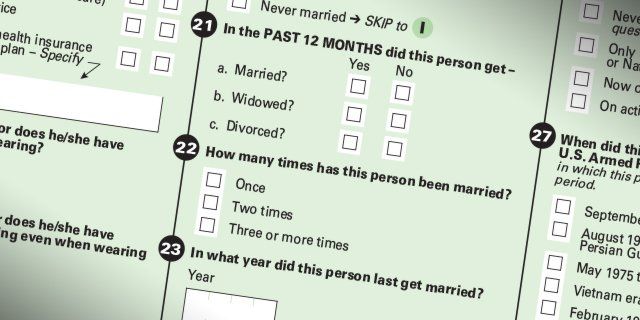Although divorce is common throughout the United States, the divorce process varies depending on the couple’s situation. Short-term marriages without children or property typically result in a less complex and time-consuming divorce than long-term marriages with significant property entanglements, marital debt, and minor children. Additionally, divorcing couples who work together to negotiate the terms of the divorce (child custody, child support, property division, debt allocation, and spousal support) will experience a less expensive and less stressful divorce than couples who can’t agree or refuse to work together.
Step One: Filing the Divorce Petition
Whether both spouses agree to the divorce or not, before any couple can begin the divorce process, one spouse must file a legal petition asking the court to terminate the marriage. The filing spouse must include the following information:
- a statement which informs the court that at least one spouse meets the state’s residency requirements for divorce
- a legal reason—or grounds—for the divorce, and
- any other statutory information that your state requires.
- Residency requirements vary depending on where you live. States usually require at least one spouse to live in the state anywhere from 3 months to 12 months, and in the county where the spouse files at least 10 days to 6 months before filing the petition. Divorcing spouses must meet the state’s residency requirement before the court can accept the case.
Grounds for divorce vary from state-to-state. However, all states offer divorcing couples the option to file a no-fault divorce. No-fault divorce is a streamlined process that allows spouses to file a divorce petition without listing a specific reason or placing blame on either spouse. If your spouse committed marital misconduct or caused the breakup, some states allow parties to claim “fault” for the divorce, like adultery or neglect. If you’re unsure whether you should file a no-fault or fault divorce, contact an experienced family law attorney in your state for guidance.
Step Two: Asking for Temporary Orders
Courts understand that the waiting period for divorce may not be possible for all couples. For example, if you are a stay-at-home parent that is raising your children and dependent on your spouse for financial support, waiting for 6-months for the judge to finalize your divorce probably seems impossible. When you file for divorce, the court allows you to ask the court for temporary court orders for child custody, child support, and spousal support.
If you request a temporary order, the court will hold a hearing and request information from each spouse before deciding how to rule on the application. The judge will usually grant the temporary order quickly, and it will remain valid until the court orders otherwise or until the judge finalizes the divorce.
Other temporary orders may include a request for status quo payments or temporary property restraining orders. Status quo orders typically require the breadwinner to continue paying marital debts throughout the divorce process. Temporary property restraining orders protect the marital estate from either spouse selling, giving away, or otherwise disposing of marital property during the divorce process. Restraining orders are usually mutual, meaning both spouses must follow it or risk being penalized by the court.
If you need a temporary order but didn’t file your request at the time you filed for divorce, you’ll need to apply for temporary orders as quickly as possible.
When you file for divorce, the court allows you to ask the court for temporary court orders for child custody, child support, and spousal support.
Step Three: Serve Your Spouse and Wait for a Response
Service: The filing spouse’s responsibility
After you file the petition for divorce and request for temporary orders, you need to provide a copy of the paperwork to your spouse and file proof of service with the court. Proof of service is a document that tells the court that you met the statutory requirements for giving a copy of the petition to your spouse. If you don’t properly serve your spouse, or if you neglect to file a proof of service with the court, the judge will be unable to proceed with your divorce case.
Service of process can be easy, especially if your spouse agrees with the divorce and is willing to sign an acknowledgment of service. However, some spouses, especially ones that want to stay married or make the process complicated, can be evasive or try anything to frustrate the process. The easiest way to ensure proper service is for the filing spouse to hire a professional who is licensed and experienced in delivering legal documents to difficult parties. The cost is usually minimal and can help prevent a delay in your case. If your spouse retained an attorney, you could arrange to have the paperwork delivered to the attorney’s office.
Response: The receiving spouse’s responsibility
The party who receives the paperwork (usually titled “defendant” or “respondent”) must file an answer or reply to the divorce petition within a prescribed amount of time. Failure to respond could result in a “default” judgment against the non-responding spouse, which can be complicated and expensive to reverse.
The responding party has the option to dispute the grounds for divorce (if a fault divorce), the allegations in the petition, or assert any disagreements as to property, support, custody, or any other divorce-related issues.
Step Four: Negotiate a Settlement
In cases where the parties have differing opinions on important topics, like child custody, support, or property division, both spouses will need to work together to reach an agreement. Sometimes the court will schedule a settlement conference, which is where the parties and their attorneys will meet to discuss the status of the case. The court may schedule mediation, which is where a neutral third-party will help facilitate discussion between the spouses in hopes to resolve lingering issues. Some states require participation in mediation, while others do not. However, mediation often saves significant time and money during the divorce process, so it's often a good route for many divorcing couples.
Step Five: Divorce Trial
Sometimes negotiations fail despite each spouse’s best efforts. If there are still issues that remain unresolved after mediation and other talks, the parties will need to ask the court for help, which means going to trial. A divorce trial is costly and time-consuming, plus it takes all the power away from the spouses and puts it in the hands of the judge. Negotiations and mediation sessions allow the couple to maintain control and have more predictable results than a divorce trial, so it’s best to avoid a trial if possible.
Step Six: Finalizing the Judgment
Whether you and your spouse negotiated throughout the divorce process, or a judge decided the significant issues for you, the final step of divorce comes when the judge signs the judgment of divorce. The judgment of divorce (or “order of dissolution”) ends the marriage and spells out the specifics about how the couple will allocate custodial responsibility and parenting time, child and spousal support, and how the couple will divide assets and debts. If the parties negotiated a settlement, the filing spouse’s attorney typically drafts the judgment. However, if the couple went through a divorce trial, the judge will issue the final order.
If you are going through a divorce, talk to Our Team at The Law Corner Today, We'd Love to Help. Call Us at 919-824-4139





